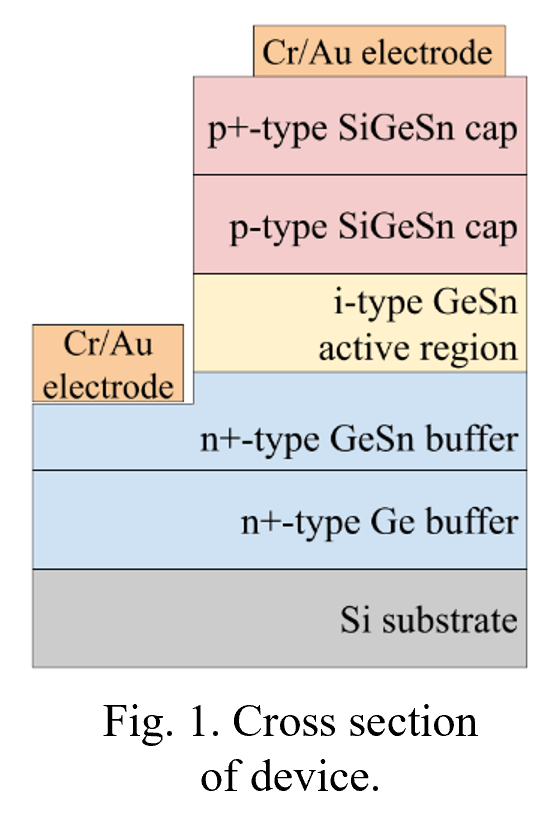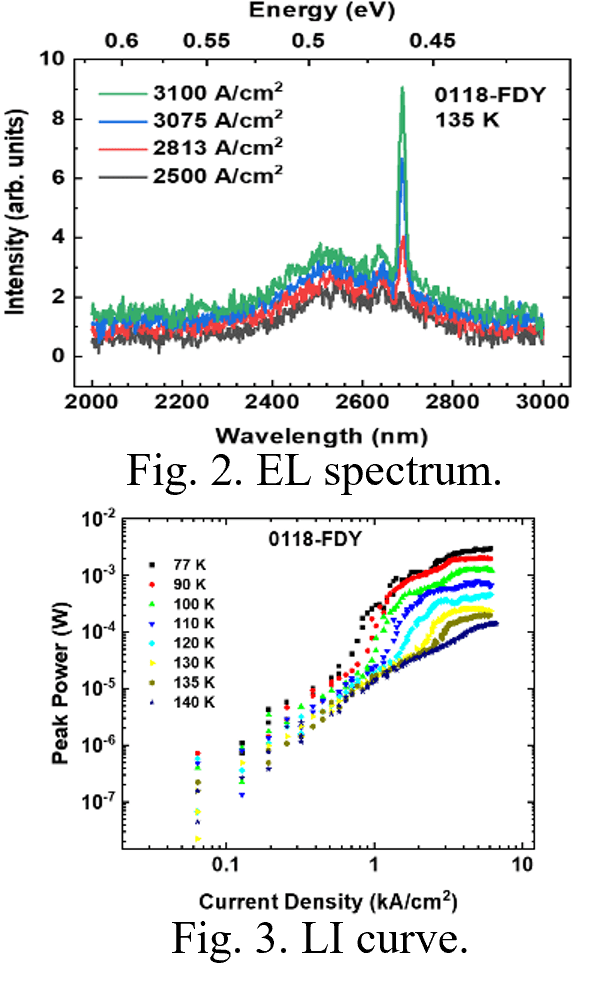Electrically Injected GeSn Lasers towards Room Temperature
Student: Nicholas Saunders
Major Professor: Dr. Fisher Yu
Research Area(s):
Microelectronic-Photonic Materials & Devices
Background/Relevance
- Use of group IV materials for semiconductors offers many benefits compared to traditional group III-V materials.
- GeSn has a direct bandgap above 8% Sn composition, making it ideal for use in optoelectronic devices.
- GeSn is complementary metal-oxide-semiconductor (CMOS) compatible and has potential applications in infrared imaging and light detection and ranging (LIDAR) technology.
Innovation
- Electrically injected GeSn lasers have not yet been extensively researched. Higher operating temperatures for such devices are desired in order to increase use in applications.
Approach
- A PIN-doped GeSn wafer was prepared by chemical vapor deposition and wet etching.
- Electrodes were deposited and wire bonded to a Si carrier chip to form a PIN-diode.
- The sample was electrically injected using a pulsed voltage source.
- Electroluminescence (EL) was measured using Fourier-transform IR spectroscopy.
- Light output v. current (LI) curves were generated at various temperatures and used to determine the lasing threshold.

Key Results
- The PIN-diode successfully exhibited rectification.
- The EL spectrum shows that the device lases at a wavelength of 2688 nm at the maximum temperature.
- Lasing occurred at temperatures as high as 135 K.
- The LI curve shows a threshold current density of 701 A/cm2 at 77 K. The threshold current density at 135 K is 2813 A/cm2.

Conclusions
-
The device successfully lased at mid-IR wavelengths.
-
The maximum operating temperature of the GeSn PIN-diode device was measured to be 135 K, beating the previous world record by 25 K.
-
Alterations in material growth and device structure need to be studied in order to further increase operating temperature. Room temperature use is desired.
-
High power eye safe mid-IR wavelengths of light can be generated by GeSn lasers. One potential application of such a device is in LIDAR technologies.
